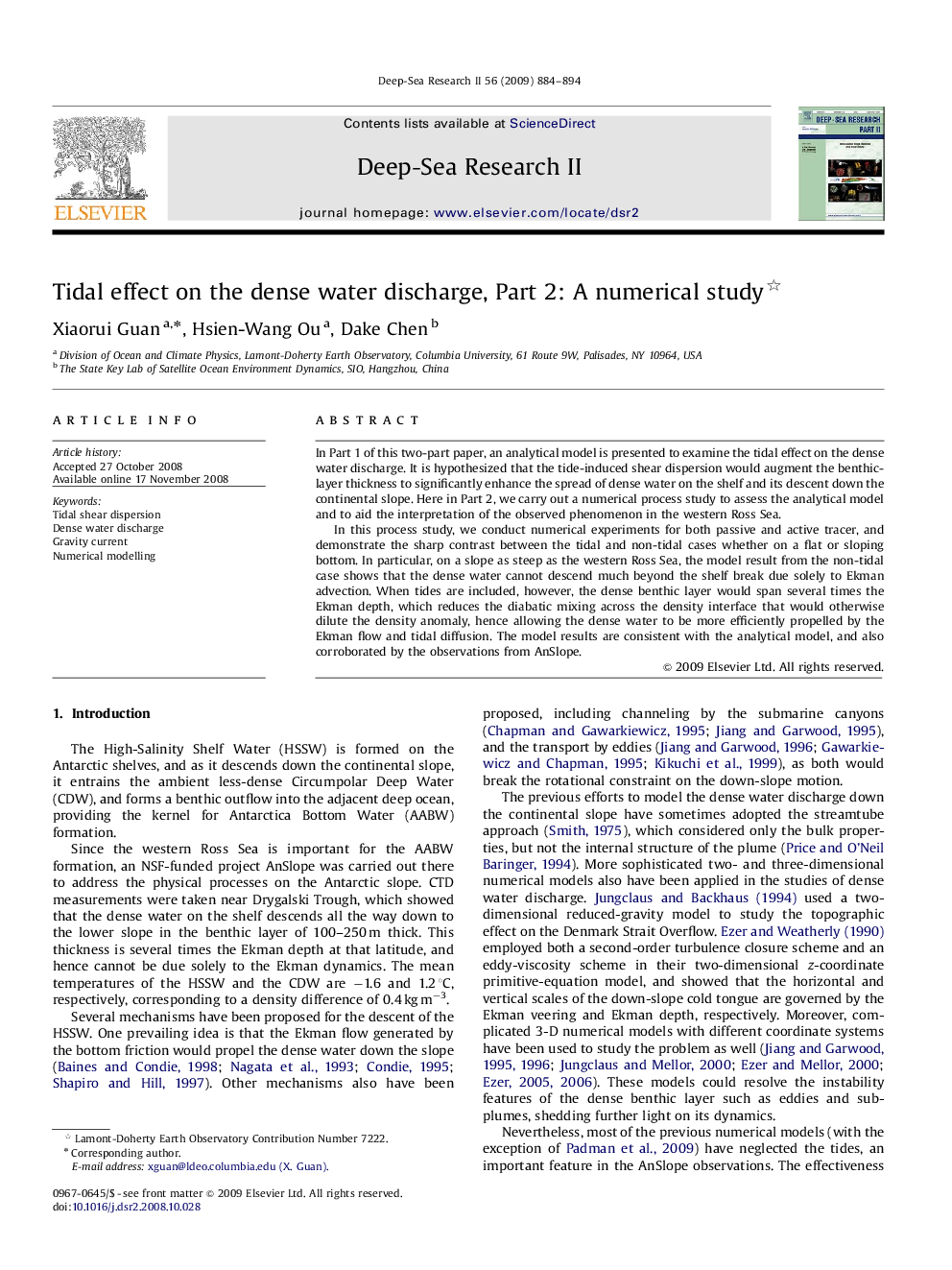| Article ID | Journal | Published Year | Pages | File Type |
|---|---|---|---|---|
| 4537067 | Deep Sea Research Part II: Topical Studies in Oceanography | 2009 | 11 Pages |
In Part 1 of this two-part paper, an analytical model is presented to examine the tidal effect on the dense water discharge. It is hypothesized that the tide-induced shear dispersion would augment the benthic-layer thickness to significantly enhance the spread of dense water on the shelf and its descent down the continental slope. Here in Part 2, we carry out a numerical process study to assess the analytical model and to aid the interpretation of the observed phenomenon in the western Ross Sea.In this process study, we conduct numerical experiments for both passive and active tracer, and demonstrate the sharp contrast between the tidal and non-tidal cases whether on a flat or sloping bottom. In particular, on a slope as steep as the western Ross Sea, the model result from the non-tidal case shows that the dense water cannot descend much beyond the shelf break due solely to Ekman advection. When tides are included, however, the dense benthic layer would span several times the Ekman depth, which reduces the diabatic mixing across the density interface that would otherwise dilute the density anomaly, hence allowing the dense water to be more efficiently propelled by the Ekman flow and tidal diffusion. The model results are consistent with the analytical model, and also corroborated by the observations from AnSlope.
